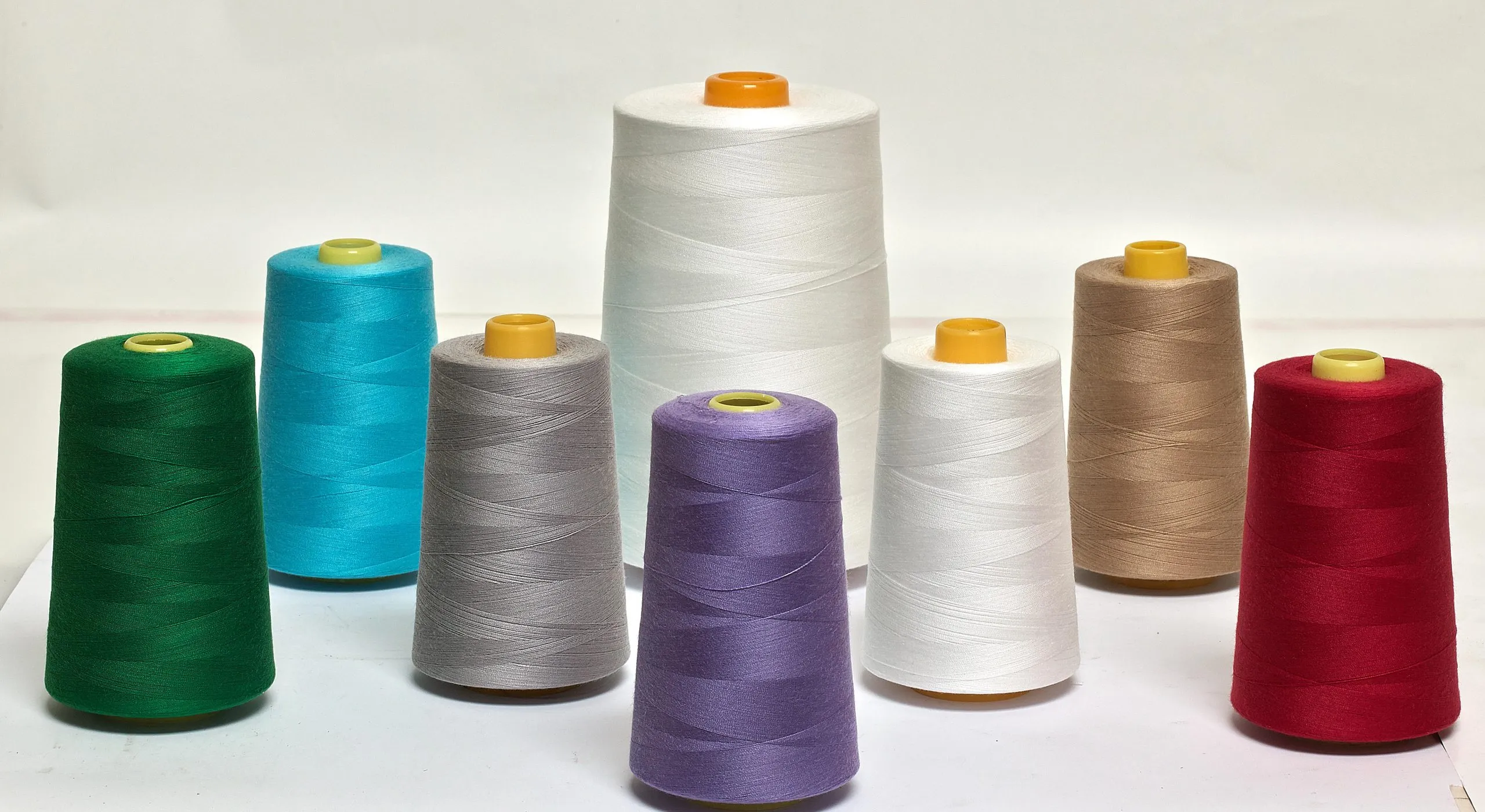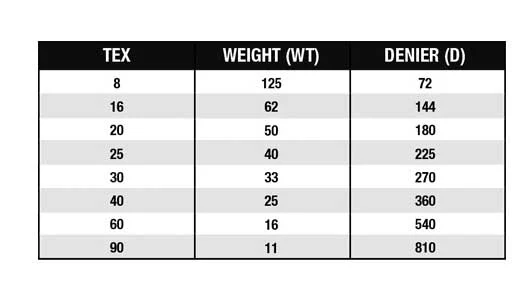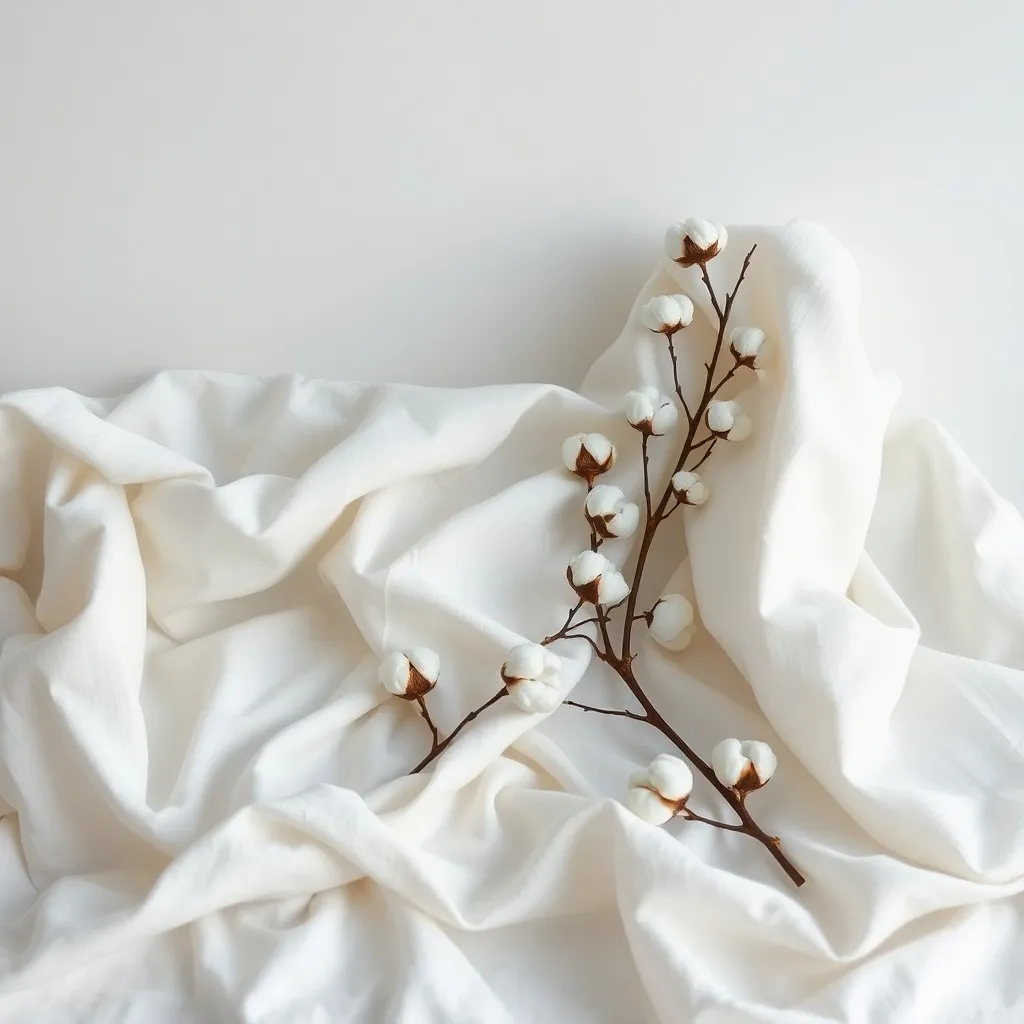
Cotton has always been a symbol of comfort and reliability — from soft T-shirts to elegant dresses, from crisp shirts to cozy bedding. At Mekong Garment, we understand how much you value your favorite cotton pieces, and we believe that caring for them should be simple and effective. While cotton is a naturally strong and versatile fabric, giving it the right care helps preserve its softness, color, and shape for years. In this guide, we’ll show you how to wash, dry, and iron cotton garments properly, so every item stays as fresh and comfortable as the day you bought it.
Exploring Cotton Fabric
You depend on cotton because it remains the leading natural fibre, supplying roughly one-quarter of global fibre use (about 25 million tonnes annually), with India, China, the US and Brazil dominating production. Brands choose cotton for comfort, breathability and supply-chain flexibility; you’ll often specify 100% cotton or blends (e.g., 60/40 cotton/poly) to balance hand-feel, cost and performance across shirts, jerseys and workwear.

You’ll notice cotton’s cellulose-based fibres offer high absorbency, good dye uptake and variable strength: staple length can range from ~16 mm to over 40 mm depending on variety, which affects softness and durability. Fabric weights span roughly 80–480 GSM (lightweight lawn ~80–120, midweight poplin 120–220, heavy denim/canvas 280+), and typical home laundering can cause 2–7% shrinkage unless pre-shrunk.

You can enhance cotton’s properties through processes like mercerization (boosts luster and dye affinity), combing (removes short fibres for strength) and sanforization (reduces shrinkage). Blending with polyester improves wrinkle resistance and dimensional stability; premium lines use long-staple Egyptian or Pima cotton for smoother hand and longer wear, while compact knits and ring-spun yarns produce finer, more durable jerseys for t-shirts.
Types of Cotton Fabric
Cotton is one of the most beloved fabrics in the world — soft, breathable, and timeless. But did you know that not all cotton fabrics are the same? Each type of cotton has its own texture, weight, and purpose, making it suitable for everything from airy summer shirts to sturdy workwear or luxury bedding
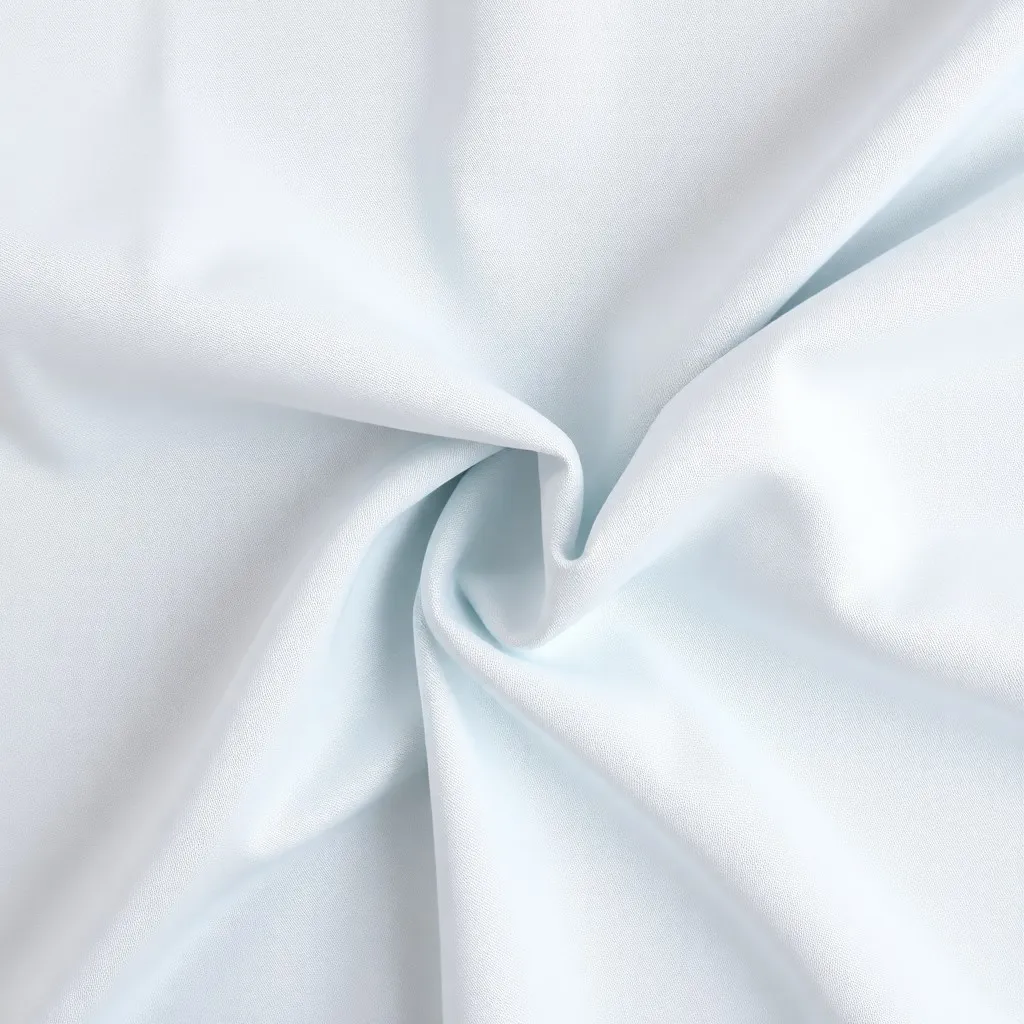
Cambric
A fine, lightweight plain-woven fabric originally made from linen, now often cotton. Cambric is crisp yet soft, with a smooth surface. It is ideal for shirts, handkerchiefs and lightweight summer dresses. Cambric is a soft, tightly woven cotton fabric with a smooth surface and light body.
- Weave type: plain weave, finely woven
- Feel: crisp yet smooth
- Common uses: men’s and women’s shirts, handkerchiefs, baby clothes
=> Related Article: Cambric Cotton Fabric: The Fine, Smooth Fabric for Everyday Elegance
It’s loved for its fresh, polished look — perfect for summer wear that feels clean and cool against the skin.
Pros
- Soft and smooth texture – Feels gentle and pleasant on the skin, ideal for sensitive wear like baby clothes.
- Lightweight and breathable – Keeps you cool in hot weather; perfect for summer shirts and dresses.
- Crisp, polished look – Always looks neat and fresh, great for a refined, everyday style.
- Durable for its weight – Despite being thin, it holds up well with proper care.
- Easy to sew and iron – Its fine, tight weave makes stitching neat and the surface smooth after pressing.
- Versatile – Works well for men’s shirts, women’s blouses, handkerchiefs, and light dresses.
Cons
- Wrinkles easily – Needs frequent ironing to maintain that crisp appearance.
- Can be slightly sheer – Lighter colors may need a lining or undershirt.
- Not very warm – Too thin for cold weather wear.
- May shrink if not pre-washed – Especially in cotton cambric.
- Limited stretch – The tight plain weave gives little flexibility.
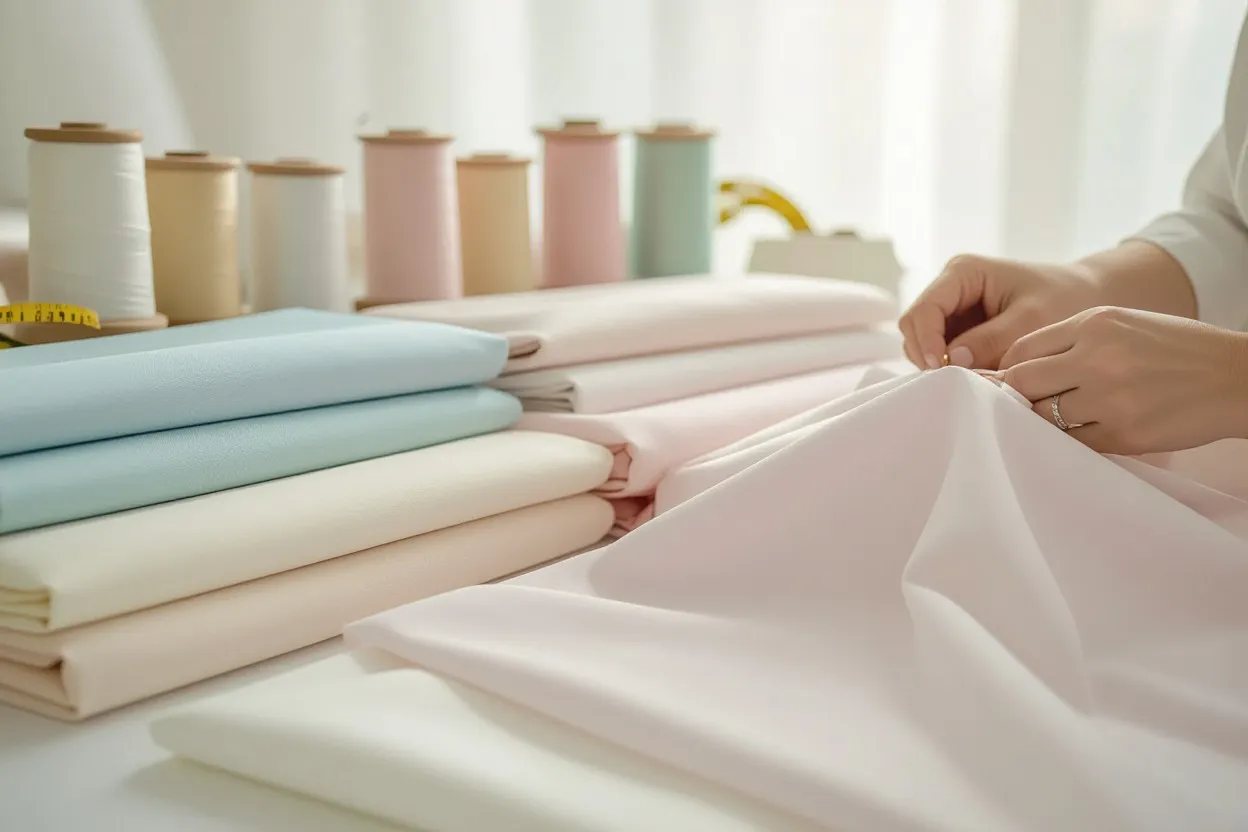
Canvas
Canvas is a heavy, densely woven fabric made of thick cotton yarns. Known for its robustness, it is commonly used for bags, workwear, tents, sails and heavy-duty items. Canvas is a heavyweight fabric made from thick cotton yarns.
- Weave type: plain weave with a dense structure
- Feel: firm, textured, sturdy
- Common uses: tote bags, shoes, uniforms, tents, upholstery
=> Related Article: Canvas Fabric: Definition, Types, Properties, and Uses Explained
Pros:
- Very durable and strong: Canvas is tightly woven, so it resists tearing and handles heavy use well.
- Long-lasting: It stays in good condition even with outdoor or work-related wear and tear.
- Water-resistant when treated: A waxed or coated canvas can repel water, making it great for tents, bags, and shoes.
- Breathable: Since it’s made from cotton, air can pass through better than with many synthetic fabrics.
- Easy to print or dye: The textured surface holds color and designs beautifully, perfect for creative or decorative use.
Cons:
- Quite heavy: Its thickness adds strength but can make it stiff and less flexible.
- Wrinkles easily: It can crease when folded or packed tightly.
- May shrink if washed hot: Untreated cotton canvas can shrink after washing.
- Absorbs stains easily: If not coated, it can soak up dirt and moisture.
- Needs maintenance: To stay waterproof or clean, canvas sometimes needs re-waxing or special care.
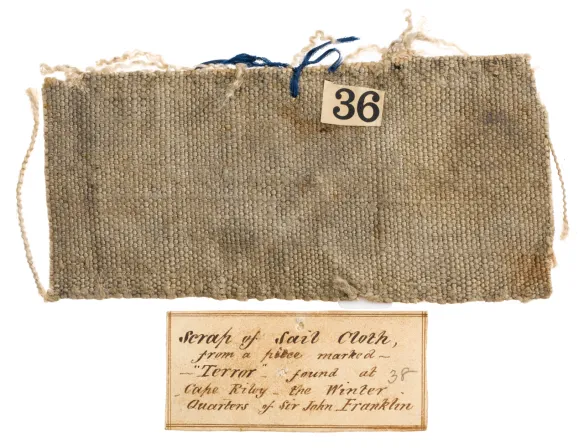
Its tight weave makes it tough and long-lasting, ideal for garments or accessories that need strength and structure. At Mekong Garment, canvas is often used for workwear and outdoor apparel that must resist wear and tear.
Corduroy
Corduroy features vertical “ribs” or “wales” – ridges created by cutting the pile of fabric. It is warm and tactile, well suited to jackets, trousers and winter apparel. Corduroy stands out with its raised “cords” or “wales.”
- Weave type: pile weave
- Feel: soft ridges with a cozy hand
- Common uses: trousers, jackets, overalls, skirts
=> Related Article: Corduroy Fabric: The Timeless Textured Classic of Comfort and Style
The thicker the wales, the bolder the texture. Corduroy keeps warmth well, making it perfect for cooler climates and stylish vintage-inspired pieces.
Pros:
- Soft and comfortable: The raised ridges give corduroy a pleasant, cozy texture against the skin.
- Warm and insulating: The pile weave traps air, helping to keep you warm in cooler weather.
- Durable: Despite its softness, corduroy is tough enough for everyday wear like trousers and jackets.
- Distinctive look: The vertical wales create a stylish, textured pattern that adds depth and richness to clothing.
- Variety of wale sizes: It comes in fine to wide wale options, offering choices for both casual and formal styles.
Cons:
- Can feel heavy or bulky: Thicker types may not be comfortable in hot or humid climates.
- Attracts lint and dust: The raised pile can easily catch small fibers or pet hair.
- Wrinkles and crushes easily: The ridges can flatten with pressure, requiring careful storage and ironing.
- Prone to wear on high-friction areas: Knees, elbows, and seams may show thinning over time.
- Limited stretch: Traditional cotton corduroy doesn’t stretch much, which can affect comfort or fit.

Denim
Denim is a twill-weave, durable cotton fabric, typically with indigo-dyed warp and white weft threads. It is synonymous with jeans and rugged workwear, and appreciated for its durability and comfort. Denim is probably the world’s most recognized cotton fabric.
- Weave type: twill weave (diagonal lines)
- Feel: firm but softens with use
- Common uses: jeans, jackets, aprons, uniforms
It’s woven with indigo-dyed warp and white weft, giving denim its famous blue tone.
Pros:
- Exceptionally durable. The twill weave and strong cotton fibers make denim tough and long-lasting.
- Comfortable over time. Though firm at first, denim softens with wear and molds to the body’s shape.
- Classic and versatile. Its timeless look suits casual, work, and even fashion wear.
- Easy to style. It pairs well with almost any color or fabric, making it a wardrobe staple.
- Ages beautifully. With use, denim fades and creases in a way that adds unique character and charm.
Cons:
- Heavyweight. Traditional denim can feel stiff and warm, especially in hot climates.
- Slow to dry. The thick weave holds moisture longer than lighter fabrics.
- Can shrink. Untreated or unwashed denim may tighten after the first few washes.
- Color fades over time. The indigo dye naturally bleeds and lightens, which some see as wear, others as style.
- Limited breathability. Compared to lighter cottons, it allows less air flow, especially in dense weaves.
Flannel
Made from cotton (or sometimes wool blends), cotton flannel is soft, slightly brushed and fuzzy. It offers warmth and comfort, so it’s often used for shirts, pyjamas, loungewear and blankets. Flannel is brushed cotton with a soft, fuzzy surface.
- Weave type: twill or plain weave
- Feel: warm, gentle, cozy
- Common uses: shirts, pyjamas, blankets
It traps air between fibers, keeping you warm on cold days. Our clients love cotton flannel for sleepwear or relaxed indoor wear lines — soft to touch, easy to love.
Gauze
Cotton gauze is a loosely woven, lightweight and usually sheer fabric. Its airy structure makes it ideal for summer garments, scarves, dress overlays or even medical uses. Gauze is a loosely woven, transparent cotton fabric.
- Weave type: open plain weave
- Feel: light, breathable, airy
- Common uses: scarves, blouses, baby wraps, medical bandages
Because it’s so light and soft, gauze is ideal for tropical climates like Vietnam, where breathability is essential.
Pros:
- Extremely lightweight. Its open weave makes gauze one of the lightest cotton fabrics available.
- Highly breathable. Air flows freely through the loose structure, keeping the wearer cool and comfortable.
- Soft and gentle. It feels soothing on the skin, making it suitable for baby clothes and sensitive skin.
- Quick-drying. Because it’s thin and airy, gauze dries much faster than dense fabrics.
- Versatile use. Ideal for clothing, scarves, wraps, and even medical bandages due to its comfort and breathability.
Cons:
- Delicate and less durable. The loose weave can snag or tear more easily than denser fabrics.
- Wrinkles easily. It tends to crease and crumple quickly after washing or wear.
- Can become see-through. Its sheer nature may require layering or lining in garments.
- May shrink. Being pure cotton, it can shrink if washed or dried with high heat.
- Limited structure. Gauze drapes softly but lacks firmness, making it unsuitable for tailored or fitted clothing.
Lawn
Cotton lawn is a fine, lightweight plain-weave fabric. Smooth and crisp, it drapes nicely and is often used for summer dresses, blouses and linings where lightness and comfort matter. Lawn cotton is a very fine, high-thread-count fabric with a silky texture.
- Weave type: plain weave
- Feel: smooth, delicate, and cool
- Common uses: dresses, blouses, linings
It’s a designer favorite for feminine, floaty garments. The tightly woven fibers give it both elegance and lightness — perfect for Mekong Garment’s premium summer collections.
Muslin
Muslin is a very lightweight, loose-woven cotton fabric. It’s affordable, breathable and often used for test garments, light dresses or as under-layers. In dressmaking, muslin is often used to draft patterns before the final fabric. Muslin is one of the simplest and most useful cotton fabrics.
- Weave type: loose plain weave
- Feel: soft, breathable, slightly rough
- Common uses: prototypes, baby clothes, casual dresses
Designers use muslin for pattern testing (“toiles”) before cutting the final fabric. It’s also comfortable and skin-friendly — making it popular for natural baby wear and reusable products.
Oxford Cloth
Oxford is a mid-weight, basket-weave cotton fabric. It has a distinct textured appearance and is wrinkle-resistant, making it a popular choice for dress shirts and casual shirts alike. Oxford cotton combines comfort with a semi-formal look.
- Weave type: basket weave (two yarns crossing two yarns)
- Feel: slightly textured yet soft
- Common uses: shirts, uniforms, dresses
It balances structure and breathability, making it one of the most versatile shirting fabrics for both office and casual wear.
Poplin
Poplin is a strong, plain-woven cotton fabric with a high weft count relative to warp, producing a subtle rib effect and slight sheen. It’s versatile: widely used for shirts, dresses, coats and trousers. Poplin is a fine, dense fabric with a subtle cross-rib texture.
- Weave type: plain weave with tight yarns
- Feel: smooth, slightly glossy
- Common uses: shirts, uniforms, dresses, linings
Poplin resists wrinkles and holds color well. It’s perfect for high-volume production due to its easy sewing and stable performance, which is why Mekong Garment often uses it for commercial shirt orders.
Terry Cloth
Terry cloth is characterized by its many loops of cotton thread on one or both sides, which greatly enhances absorbency. It’s the go-to fabric for towels, bathrobes and comfortable loungewear. Poplin is a fine, dense fabric with a subtle cross-rib texture.
- Weave type: plain weave with tight yarns
- Feel: smooth, slightly glossy
- Common uses: shirts, uniforms, dresses, linings
Poplin resists wrinkles and holds color well. It’s perfect for high-volume production due to its easy sewing and stable performance, which is why Mekong Garment often uses it for commercial shirt orders.
Velour
Velour is a pile-knit cotton fabric that resembles velvet in appearance, but is more affordable and generally more casual. It is used for sweat sets, loungewear and some upholstery or soft-furnishing applications. Velour looks like velvet but is more casual and flexible.
- Weave type: pile knit
- Feel: plush, stretchy, and warm
- Common uses: tracksuits, loungewear, upholstery
It gives off a luxurious yet comfortable vibe — ideal for fashion pieces that merge relaxation with refinement.
100% Cotton (Pure Cotton)
Pure cotton fabric is made entirely from natural cotton fibres without any synthetic additives. It’s the kind of material most people imagine when they think of “soft, breathable cotton.” Because it’s free of plastics or polyester, it offers a wonderfully natural touch and allows air to flow easily through the fibres. This makes it perfect for tropical or humid climates where the skin needs to breathe. However, its natural quality also means it wrinkles easily and can shrink if not properly pre-treated.
Pros:
- Very soft, gentle on skin, suitable for all ages—even babies.
- Excellent breathability and moisture absorption.
- Natural, biodegradable, and eco-friendly.
Cons:
- Prone to wrinkling and shrinking after washing.
- Takes longer to dry compared with synthetics.
- Usually costs more than blended fabrics.
Smart Applications:
Ideal for daily wear like t-shirts, baby clothes, bedsheets, pajamas, and summer outfits that require comfort and freshness.
=> Related Article: 100% Cotton Fabric: Pure Cotton Yarn, Naturally Soft

CVC Fabric (65% Cotton – 35% Polyester)
CVC stands for Chief Value Cotton—a fabric that blends the comfort of cotton with the strength of polyester. It typically contains around 65% cotton and 35% polyester. The goal is to keep the softness and breathability of cotton while improving wrinkle resistance and lifespan. This combination makes it a favorite for factories producing uniforms or affordable everyday clothing. It’s also more stable in washing and easier to care for than pure cotton.
Pros:
- More durable and wrinkle-resistant than pure cotton.
- Maintains shape and color longer after multiple washes.
- Lower cost while keeping a pleasant cotton feel.
Cons:
- Slightly less breathable than 100% cotton.
- May feel warmer when worn in very hot conditions.
- Not as soft as fully natural fibres.
Smart Applications: Best used for work uniforms, school uniforms, casual shirts, and family clothing that need daily washing and durability.
=> Related Article: Cotton CVC: Cotton and Polyester: A Perfect Combination
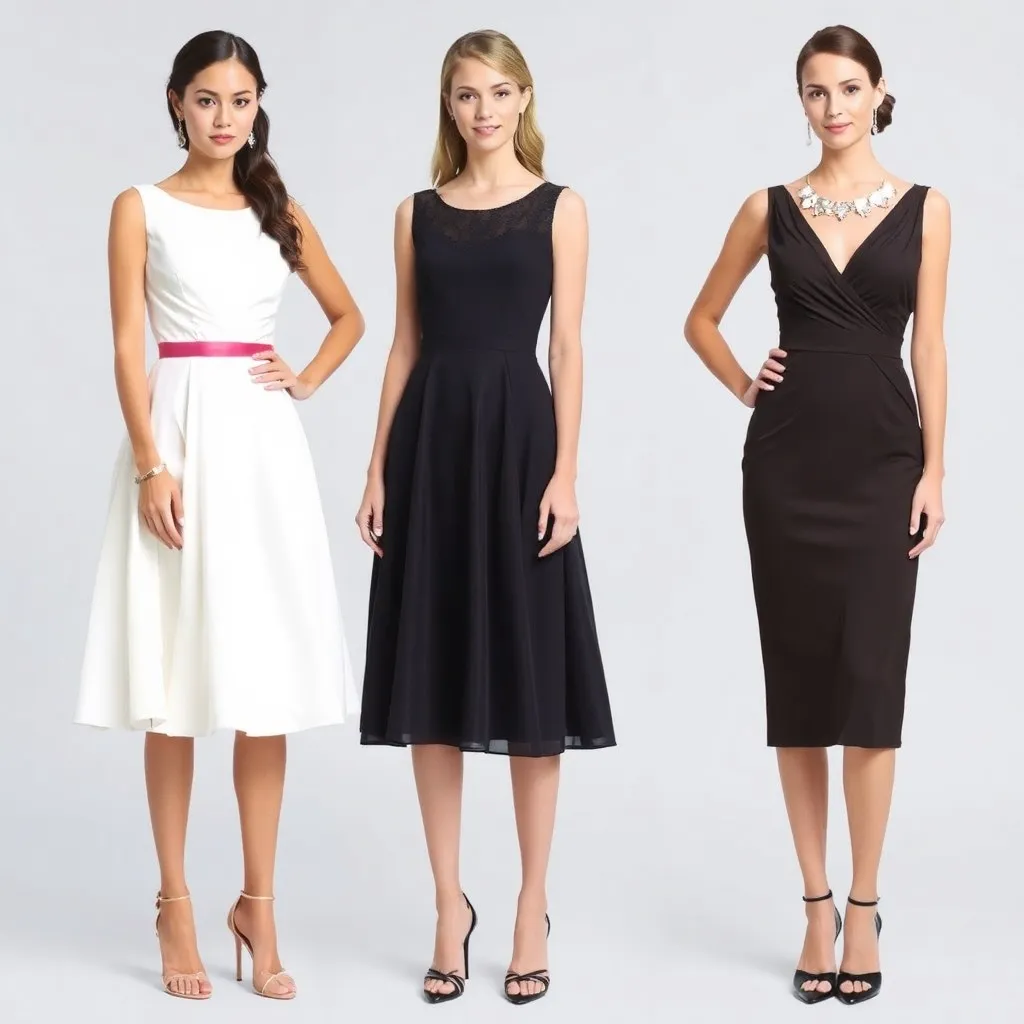
T/C Fabric (35% Cotton – 65% Polyester)
T/C fabric flips the ratio of CVC: it contains more polyester than cotton. This makes it more resistant to stretching, shrinking, and fading—perfect for long-term use in affordable products. Although the fabric feels a little less “natural,” it’s easier to iron and keeps its shape well. It’s widely used in industrial, hotel, and service uniforms that face tough washing conditions. Because of its affordability and durability, it’s one of the most practical blends in large-scale garment manufacturing.
Pros:
- Very strong and holds shape well.
- Resistant to shrinking, fading, and wrinkling.
- More budget-friendly for mass production.
Cons:
- Less breathable and may feel less soft on the skin.
- Can cause static cling in dry weather.
- Absorbs less moisture, making it slightly warmer to wear.
=> Related Article: Cotton TC Fabric (35% Cotton, 65% Poly): Affordable, Easy to Manufacture
Smart Applications: Ideal for workwear, lining fabrics, promotional t-shirts, and budget-friendly uniforms where toughness matters more than comfort.

Cotton Satin (Fine-Weave Cotton with Glossy Surface)
Cotton satin is a luxurious version of cotton that uses a satin weave to produce a soft sheen on the surface. It still contains natural cotton fibres but feels smoother, denser, and more refined. The satin weaving method makes light reflect gently, giving garments a classy look without sacrificing comfort. People love it for premium clothing and bedding because it combines everyday practicality with an elegant, silky touch. It’s a favorite choice when you want something both comfortable and visually polished.
Pros:
- Smooth, glossy, and luxurious appearance.
- Breathable while feeling silky on the skin.
- Looks elegant, ideal for premium apparel.
Cons:
- Can wrinkle more than synthetic satin.
- Requires careful washing and ironing.
- Slightly higher production cost.
Smart Applications: Perfect for dress shirts, blouses, wedding bedding, and elegant fashion pieces needing both comfort and shine.
=> Related Article:

Cotton Silk Blend (Cotton + Natural Silk)
Cotton-silk fabric is a premium blend that brings together the softness of cotton and the sheen of silk. The cotton fibres make it breathable and comfortable, while silk adds a graceful drape and luxury finish. The combination creates a balanced fabric that’s light, smooth, and elegant without feeling heavy. It’s commonly used in higher-end fashion and cultural garments that demand both practicality and beauty. This blend delivers sophistication while still keeping the ease of cotton care.
Pros:
- Soft, cool, and beautifully smooth texture.
- Has a natural sheen from the silk content.
- Feels elegant yet breathable.
Cons:
- Needs delicate care (hand wash or low-temperature washing).
- Costs more than ordinary cotton fabrics.
- Not as strong as polyester blends.
=> Related Article: Cotton Silk: Gentle, Breathable, and Elegantly Smooth
Smart Applications: Used in traditional outfits, elegant dresses, men’s shirts, scarves, and other high-end fashion pieces.

Cotton Velvet (Soft Pile Cotton Fabric)
Cotton velvet is a plush, rich-feeling fabric made by weaving fine cotton yarns and creating a short, soft pile on the surface. It’s known for its warm texture and gentle shine. Although heavier than normal cotton, it’s soft to the touch and has a luxurious look. This makes it ideal for winter garments or interior decor where comfort and appearance both matter. Despite its premium image, it’s still breathable because the base fibre is cotton.
Pros:
- Soft, warm, and comfortable.
- Elegant and rich surface texture.
- Natural breathability compared to synthetic velvets.
Cons:
- Slightly heavier and thicker, not for hot climates.
- Attracts dust easily and requires careful maintenance.
- Can lose pile or flatten over time.
Smart Applications: Used for jackets, dresses, coats, cushions, and decorative upholstery.
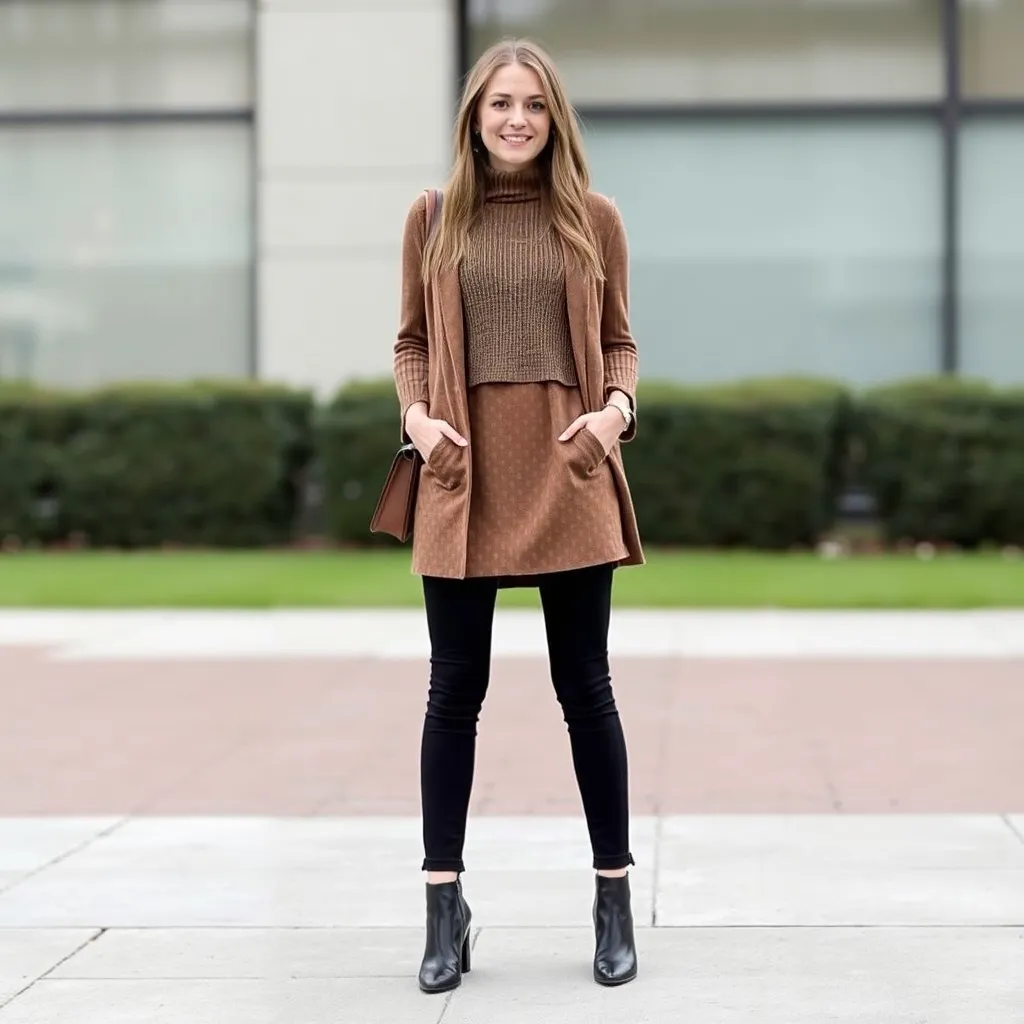
Stretch Cotton (Cotton + Spandex / Elastane)
Stretch cotton is a modern innovation that combines cotton’s comfort with spandex’s elasticity. By adding a small percentage (2–5%) of spandex, the fabric becomes flexible and returns to shape easily after movement. This makes it perfect for clothing that needs to stretch — jeans, sportswear, or fitted office wear. It gives you the breathability of cotton with the freedom of motion of activewear. The result is everyday comfort that still looks neat and stylish.
Pros:
- Stretches easily, provides comfort during movement.
- Retains shape after washing or long wear.
- Smooth texture and neat appearance.
Cons:
- Can lose elasticity after many washes.
- Slightly less breathable than pure cotton.
- More expensive than basic cotton.
Smart Applications: Ideal for jeans, leggings, sportswear, fitted shirts, and uniforms requiring flexibility.
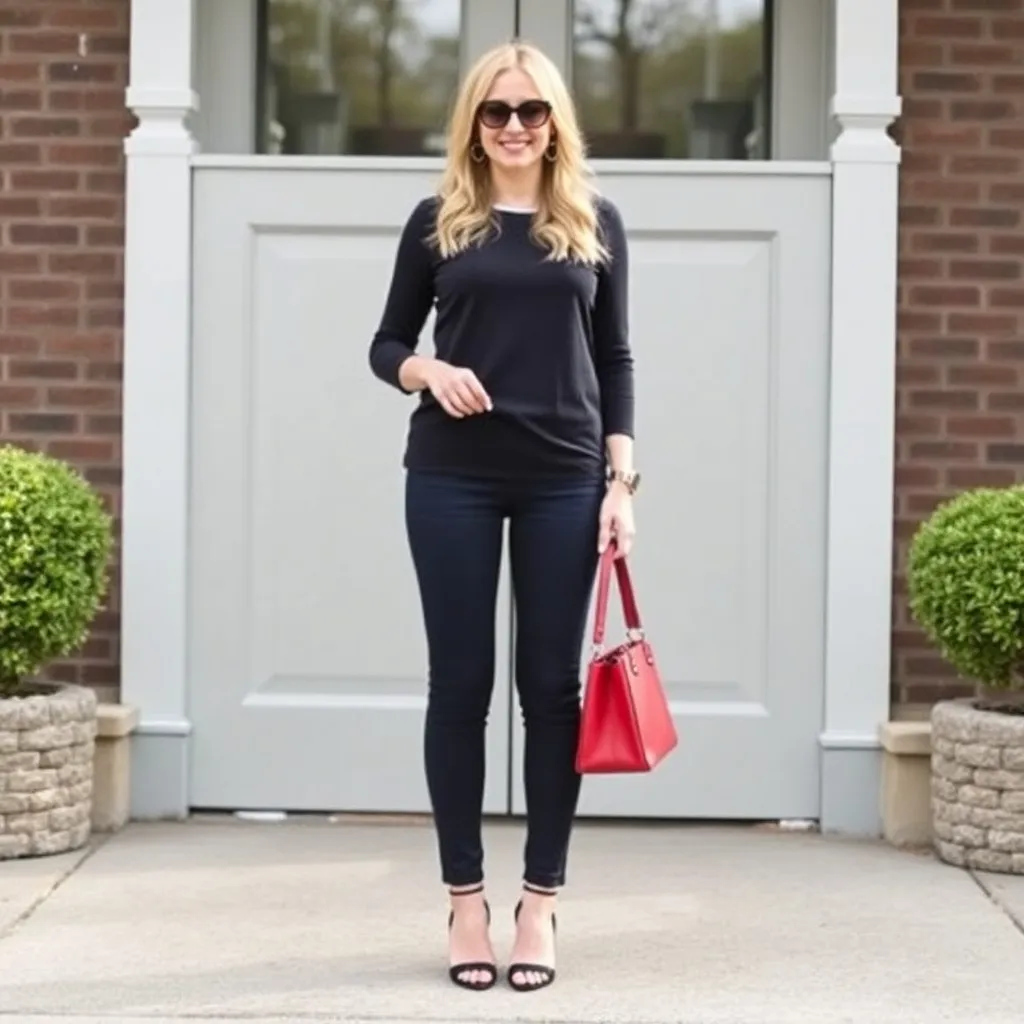
Functional Cotton (“Cool”, Dry, or Water-Resistant Finishes)
Functional cotton refers to cotton fabrics that have been specially finished or treated to perform extra tasks — like moisture-wicking, cooling, or water-repelling. These advanced finishes make cotton more suitable for modern lifestyles. For instance, “cool cotton” keeps your body comfortable on hot days, while “dry cotton” dries faster after washing or sweating. Some functional cottons even include UV protection or antibacterial properties. These innovations allow natural cotton to compete with high-tech synthetic fabrics while staying eco-friendly.
Pros:
- Offers extra comfort features such as quick-dry or cool-touch.
- Keeps wearer fresh even in hot or humid environments.
- More sustainable option compared to 100% synthetics.
Cons:
- May lose function over time if finish wears off.
- More expensive to produce.
- Requires gentle washing to preserve coating.
Smart Applications: Used for activewear, outdoor wear, travel clothing, and performance uniforms that demand both comfort and practicality.
How to Care for Cotton Clothes – A Simple Guide
Washing Cotton Properly
Before washing, always check the care label on your garment. Some cotton blends contain stretch fibers or delicate finishes that require special attention.
Tips for washing cotton:
- Temperature: Use a lower temperature (30–40°C) to protect bright or dark colors. Hot water can cause fading or shrinkage.
- Detergent: Choose a mild laundry detergent made for cotton fabrics.
- Fabric conditioner: Add a softener (such as Comfort) to your machine’s conditioner drawer. It coats each fiber, helping your clothes stay soft, smell fresh, and hold their shape.
- Extra care: Turn garments inside out before washing to reduce friction and prevent pilling (“bobbles”).
Why this matters:
Using fabric conditioner doesn’t just make clothes smell great — it also helps reduce static, makes ironing easier, and prevents stretching or stiffness. In short, it keeps your favorite cotton pieces looking and feeling like new!
Drying Cotton Safely
Cotton loves fresh air, so air-drying is best whenever possible. If you use a dryer, always check your garment’s label first.
Drying tips:
-
Dry naturally in the shade to prevent color fading.
-
If using a dryer, select a cool or low-heat setting to avoid shrinkage.
-
Reshape garments while damp — especially T-shirts or knit cotton — to help them dry evenly and keep their form.
Pro tip:
Avoid over-drying cotton. Too much heat can weaken fibers and make them rough over time.
Ironing Cotton the Easy Way
Ironing keeps cotton crisp and neat. Here’s how to do it gently:
- Always check the care label for the recommended temperature.
- For most cotton fabrics, use a medium-to-high heat setting with steam.
- Iron while the garment is slightly damp — this helps smooth wrinkles faster.
- If you used fabric conditioner, you’ll notice your cotton feels softer and easier to press.
Optional tip: Add a light spray of water or ironing mist with fragrance for a fresh, professional finish.
Keep Cotton Clothes Looking New
Cotton is durable — but treating it kindly will help it last even longer.
- Avoid bleach unless the label says “safe for whites.”
- Wash similar colors together to prevent dye transfer.
- Store cotton in a cool, dry place, folded neatly or hung on padded hangers.
Remember: Cotton is a natural fiber. It softens with each wash, becoming more comfortable over time. With proper care, you can enjoy your cotton clothes season after season — keeping both quality and comfort intact.
Summing up / Final Word
Upon reflecting on the 15 different cotton fabrics presented by Mekong Garment, you gain a practical roadmap for selecting materials that fit your product goals: lightweight lawns and cambric for summer, denim and canvas for durability, flannel and corduroy for warmth, and gauze or muslin where breathability matters. With this overview you can match performance, feel and manufacture requirements to deliver garments that meet your design and market needs.
FAQs About Different Types of Cotton Fabric
What lightweight cottons are best for hot climates and summer garments?
Cambric, lawn, gauze and muslin are ideal: cambric and lawn are fine, smooth and breathable for dresses and blouses; gauze is airy and sheer for overlays and scarves; muslin is loose-woven and breathable for casual summer pieces and underlayers.
Which cotton fabrics are most suitable for heavy-duty items and workwear?
Canvas and denim are top choices: canvas is heavyweight with a tight weave for bags, tents and rugged outerwear; denim’s twill weave and indigo-dyed warp provide durability for jeans and work garments. Corduroy can also be used for sturdy trousers and jackets.
What cotton types does Mekong Garment recommend for shirts and shirting collections?
Poplin, Oxford cloth, cambric and lawn are preferred: poplin is dense with a subtle rib and resists wrinkles; Oxford offers a textured, semi-formal look; cambric and lawn deliver a smooth, lightweight feel for premium shirting and summer blouses.
Which cotton fabrics are best for warm loungewear, robes and winter garments?
Flannel, corduroy, velour and terry cloth suit cooler conditions: flannel is brushed and fuzzy for warmth; corduroy traps heat with its wales; velour offers a soft pile for lounge sets; terry cloth has looped surfaces with excellent absorbency for robes and towels.
How do weave and construction influence a cotton fabric’s performance and use?
Weave and construction determine weight, drape, durability and texture: plain weaves (cambric, lawn, poplin) yield smooth, versatile fabrics; twill (denim) gives strength and diagonal texture; pile (corduroy, velour) adds warmth and hand; loops (terry) increase absorbency; loose weaves (gauze, muslin) provide breathability and softness.
What care guidelines should I follow for different cotton fabrics to keep them looking and performing well?
Follow fabric-specific care: wash delicate, lightweight fabrics (lawn, gauze, cambric, muslin) on gentle cycles with cold water; launder denim and canvas inside out and avoid excessive heat; tumble-dry terry on low or line-dry to preserve loops; use low-to-medium iron for poplin and Oxford; avoid harsh bleaching and pre-wash new cottons to limit shrinkage and color loss.

